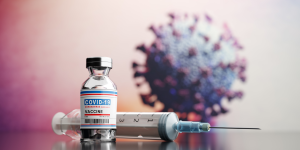ICTpost Health IT Bureau
The number and variety of wireless medical devices is growing rapidly, driven by the expansion of wireless communication technology and the medical needs of the aging population in the world. However, these devices face security problems that may be avoided with careful planning and implementation.
Medical devices purchased by consumers used to self-monitor health conditions will account for more than 80% of wireless devices, according to a study conducted by IMS Research.
IMS Research projects that medical devices utilized by the consumer to self-monitor their health, rather than those used in managed telehealth systems, will provide the largest opportunity for wireless technologies such as Bluetooth low energy and ANT+ over the next five years. IMS Research forecasts that more than 50 million wireless health monitoring devices will ship for consumer monitoring applications during the next five years, with a smaller number being used in managed telehealth systems.
The demand for self-monitoring one’s health is growing much faster than that for telehealth implementation. Even without healthcare systems that are adapted for this, consumers want to be able to monitor and manage their own health at home.
According to Lisa Arrowsmith, senior analyst at IMS Research, Due to the relatively slow deployment of managed telehealth systems, which is in part due to a reluctance from health providers to move past trials, issues with reimbursement, and stringent regulations related to the use and storage of medical data, medical devices used by the consumer to independently monitor their health will provide the biggest uptake of wireless technology in consumer health devices over the next five years.
One the main drivers for the inclusion of wireless technology in consumer health monitoring devices is the ability to monitor one’s health using a separate device such as a smartphone to collect and view the information.
Security Issues
The development of devices that monitor patients’ conditions and dispense medications adds a lot of medical information moving wirelessly through cyberspace that is vulnerable to corruption or interception. By 2021, a substantial portion of the IVD market will be ported to mobile devices and chip-based technologies. Fifty-five percent of all medical data was already on mobile or portable devices in 2019, a staggering percentage in view of the susceptibility to theft of such devices. Intercepted information may contain private information such as social security numbers or credit card account numbers that can lead to identity theft or blackmail of the company responsible for its privacy. Likewise, data corruption can be caused by viruses, worms, and web crawlers initiated by malicious individuals or by companies seeking to gain information.
The most vulnerable part of a wireless medical device is the middleware that sits on top of the OS and provides the management, transmission and receipt of information. As new wireless applications for medical monitoring are developed and commercialized, software and operating systems, many of them for real time data transfer, have also been developed for these smaller platforms.








